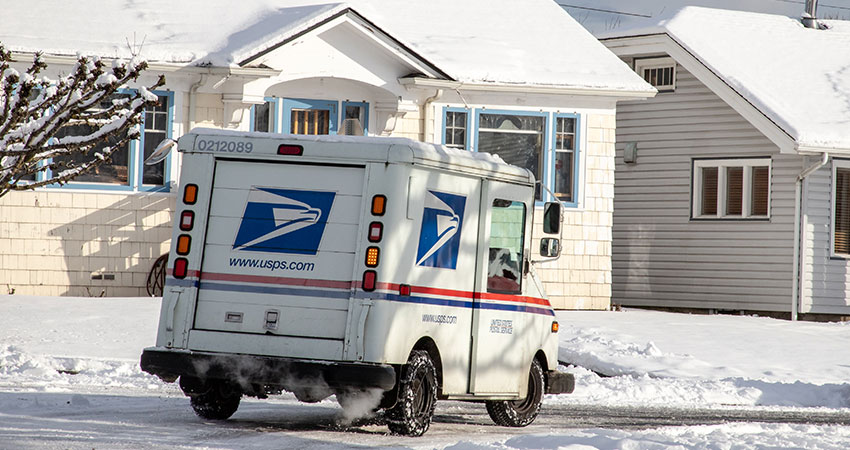The U.S. Post Office suffered most in terms of on-time performance and complaints this peak holiday season, experts agreed, with FedEx also having issues but not to the same extent and UPS doing better, as all were buried by a cataclysmic holiday package deluge from Thanksgiving to Christmas.
Reports came in from all over the country about extra-long USPS delays that had items not showing up in time for Christmas, sometimes taking weeks in places like Detroit, Memphis and Pittsburgh. In some instances even Priority Mail service, promising 1-3 business day service, took weeks for items shipped in early December.
To be fair, the USPS was the recipient of lots of seasonal spillover of holiday package volume that UPS and FedEx couldn’t handle and it had to, and thousands of workers have been sidelined with a COVID diagnosis.
“I think the USPS had huge problems and is having them still,” said Steve Mulaik, a partner at supply chain consultancy Argon & Co. “I understand that a 50% bump in ecommerce volume is huge for anyone to take on, but Fed Ex and UPS have had far fewer service issues.”
“We delivered a record amount of packages this holiday season in the midst of the pandemic, which significantly impacted our workforce availability,” said a USPS spokesperson in Memphis. “We will continue to work around the clock to deliver all packages and mail entered into our system.”
Satish Jindel, president of ShipMatrix, said for the closing week of Dec. 20-26, FedEx posted a 96.5% on-time performance record, UPS was at 97.6% and the USPS was at 94.7%. Even so, he said, more than 2 million parcels were not delivered by Christmas. Many of them will no doubt be returned by disgruntled consumers, adding to a reverse flood to all carriers and processors that is also expected to break records.
Jindel said between the three major carriers plus Amazon and the regionals, more than 3 billion packages were delivered this peak holiday season, easily a record.
Jerry Hempstead, an independent parcel consultant, said he heard multiple reports of USPS packages being misrouted on “around-the-world excursions that were the envy of people with frequent flyer programs.” Much of this was highly visible based on tracking details, he said.
“Amazon and UPS, I think did great, and the regional carriers gained a bunch of credibility,” Hempstead said. “UPS was a little lighter than plan. FedEx had issues and they admit they did. I think procuring enough drivers was the big problem and they were behind the curve most of the season. The service was poor all peak but people accepted it and they mostly came through by Christmas. A big help was their weekend operations and seven-day network. It’s a big advantage.”
Thomas Andersen, a partner and EVP, supply chain services with LJM Group, said the results of holiday package delivery performance were better than expected, especially for UPS and FedEx, which provided conservative cutoffs and limited volume on larger shippers to keep the spike from getting out of control.
“The one that suffered was the USPS,” Andersen said. “They received much of the overflow of UPS and FedEx volume, but also dealt with their natural spike in volume. All carriers have been dealing with a lack of capacity at certain facilities based on fleets and personnel, and the bottlenecks, while anticipated, could not be avoided in the current environment.”
Andersen said carriers now have time to assess the results and manage capacity more effectively in 2021 based on the major stress test they just experienced – until the next peak. “Things should certainly continue to improve in the meantime,” he said.
Gordon Glazer, a senior parcel consultant with Shipware, said his company had been advising ecommerce shipper clients to upgrade to USPS Priority Mail, knowing that “shipageddon” volume would flood in to the USPS from other carriers and plane cargo capacity was limited and prioritized.
“To the Post Office’s credit you did not see them blaming this fact, but instead focused on the realities of bad weather and COVID-19 impacts to their labor pool,” Glazer said. “Like the entirety of the pandemic, we cautiously wait for better times. Late ecommerce packages? Just a bump in the road, like the saying goes, ‘this too shall pass.’ ”
Glazer also gave a shout out to the thousands of postal and parcel employees across carriers “that worked into the night to deliver for us.”

